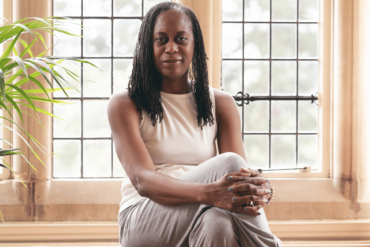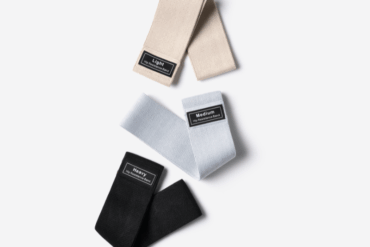The term ‘body positive’ may mean different things to different people, but at its core, it’s about self-acceptance and believing in oneself, regardless of body shape, size, or yoga experience.
A body positive yoga class, as explained in my book “Teaching Body Positive Yoga,” is an inclusive and accessible space for everyone, regardless of their shape, size, ethnicity, gender, age, or dis(ability). It’s a judgment-free space that welcomes everyone.
It’s disheartening to see that mainstream media sometimes perpetuates the false idea that only certain individuals with a specific body type can practice yoga, such as tall, young, slim, white, and able-bodied individuals who can twist themselves into pretzel-like poses. Thankfully, many yogis are challenging this perception.
Since I began teaching body positive classes in 2015, I’ve witnessed the growing diversity in yoga and wellbeing spaces. While there has been progress, there’s still a long way to go, as some people continue to feel unwelcome.
The popularity of Body Positive Yoga is on the rise, but it’s sad to see that many still don’t feel at ease in yoga and wellness spaces. Some people are anxious about attending classes, fearing they won’t fit in. Online classes have become a solution, providing a safe and accessible way to practice.
One common concern is that of stiffness and inflexibility. It’s essential to remember that flexibility is not a requirement for yoga; it can develop over time. Everyone should feel they can come as they are, without any prior experience. We need to remember that yoga is not just about the asana (poses) and that there is so much more than the physical aspects.
Some students have significant fears, to the point that they won’t even get on the floor, worried they won’t be able to get up again. By letting them know they can do as much or as little as they want, we build trust in their bodies. Allowing practitioners to know that if all they want to do is stay in Savasana (corpse pose) for their entire class that is fine too. It’s incredible to see them accomplish what they thought was impossible in their very first class.
The fact that these individuals join the class shows their determination and commitment to a healthier lifestyle, which should be celebrated.
Body positive yoga is about adapting poses for a wide range of bodies and understanding the challenges students may face. These classes aim to bridge gaps, not create divisions, and they are as essential as pregnancy or chair yoga classes, catering to unique needs and bodies.
Yoga doesn’t discriminate based on appearance or abilities; it’s a practice for all. Unfortunately, it is the teachers that may have unconscious bias.
This need for body positive classes is reinforced by the feedback I receive, such as Fran’s experience.
“Last Saturday, I dolled up and took myself to my first Curvesome Yoga class. I like to think I can flex and bend, but I still cannot bring myself to go to a “regular” Yoga class, as my local seems to have a mature crowd and fear they won’t completely understand my struggles.” Fran
Let’s not forget that some of us are born yogis with innate flexibility, just like a happy baby holding its big toe to its mouth (Happy Baby Pose).
Children can inspire us in our yoga journey, showcasing the natural way our bodies are designed to move.
In the words of T. Krishnamacharya, “Yoga must be made to suit the individual, not the individual to suit yoga.”
The post What is body positive yoga? appeared first on Blog – Yogamatters.



